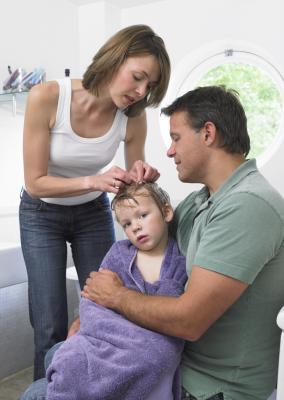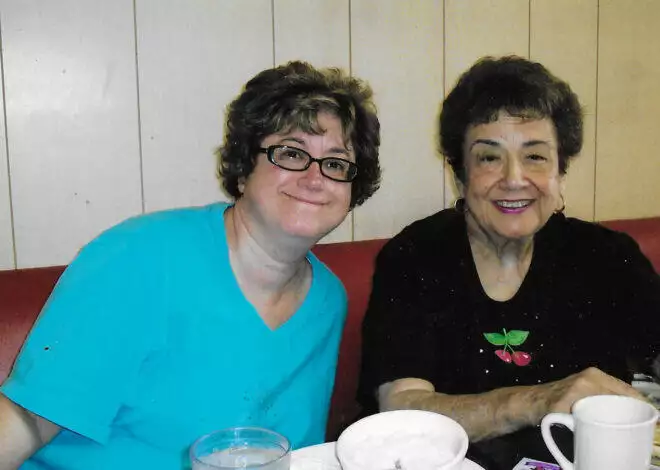Head lice are parasitic insects that, according the Centers for Disease Control and Prevention, are not known to carry diseases. They live on the human scalp and hairs and feed from blood. They cannot hop or fly, though they can travel by crawling and are spread through direct contact with the hair of someone who has been infested. The head-lice lifecycle takes three stages: the egg; the nymph, which is an immature louse; and the adult. Eggs are also called nits. According to Medline Plus, head lice can survive up to 30 days on a human, and eggs can live for more than two weeks.
Step 1
Treat the lice infection. If you remove the eggs without treating the infection, more eggs will be laid, so prioritize egg removal as part of the overall treatment. Treatment can involve an over-the-counter shampoo or malathion, a prescription lotion approved by the U.S. Food and Drug Administration that partially kills the eggs.
Step 2
Put on disposable gloves and examine the scalp for eggs by physically moving the hair. Examine the scalp is sections to help ensure you cover the entire scalp. Use a magnifying glass to see the nits, which are about the size of a knot in thread, oval-shaped and yellow or white in color.
Step 3
Use a nit comb to remove the nits by combing through the hair, starting at the scalp. Medline Plus notes that rubbing the comb with olive oil first can make the combing more effective.
Step 4
Examine the scalp again and repeat the combing if any eggs remain.
Step 5
Repeat the examination of the scalp and hair for nits and lice after a week has passed. Repeat treatment as directed and use the nit comb if any eggs are found.





